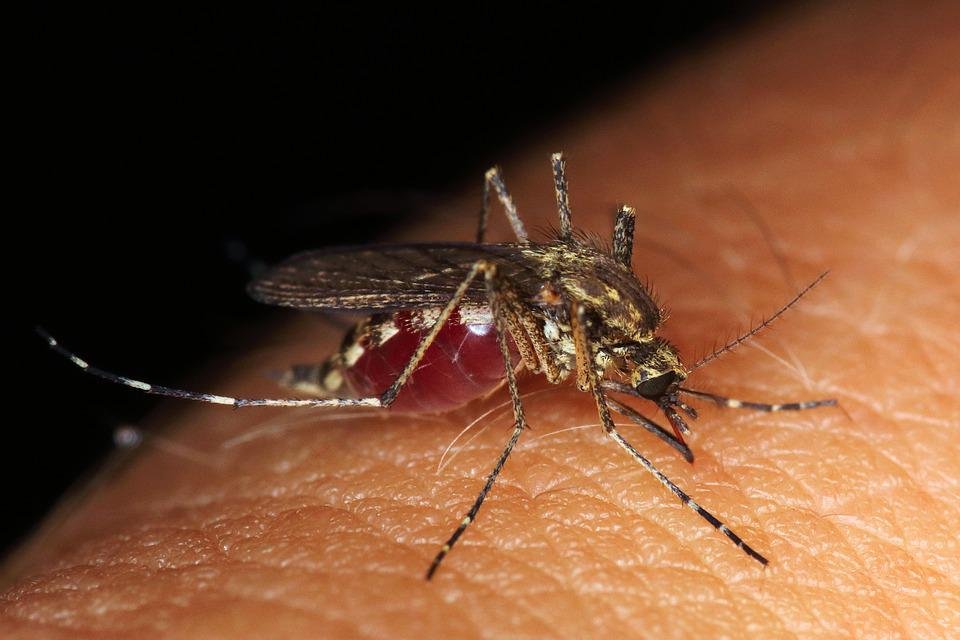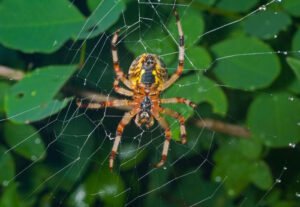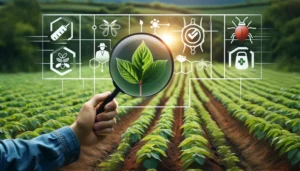Biological pest control is a method of controlling pests such as insects and mites by using other organisms.[8] It relies on predation, parasitism, herbivory, parasitody or other natural mechanisms, but typically also involves an active human management role. Classical biological control involves the introduction of natural enemies of the pest that are bred in the laboratory and released into the environment. An alternative approach is to augment the natural enemies that occur in a particular area by releasing more, either in small, repeated batches, or in a single large-scale release. Ideally, the released organism will breed and survive, and provide long-term control.[9] Biological control can be an important component of an integrated pest management programme.
For example: mosquitoes are often controlled by putting Bt Bacillus thuringiensis ssp. israelensis, a bacterium that infects and kills mosquito larvae, in local water sources.[10]
Mechanical pest control is the use of hands-on techniques as well as simple equipment and devices, that provides a protective barrier between plants and insects. This is referred to as tillage and is one of the oldest methods of weed control as well as being useful for pest control; wireworms, the larvae of the common click beetle, are very destructive pests of newly ploughed grassland, and repeated cultivation exposes them to the birds and other predators that feed on them.[11]
Crop rotation can help to control pests by depriving them of their host plants. It is a major tactic in the control of corn rootworm, and has reduced early season incidence of Colorado potato beetle by as much as 95%.[12]
Trap cropping[edit]
Main article: Trap crop
A trap crop is a crop of a plant that attracts pests, diverting them from nearby crops.[13] Pests aggregated on the trap crop can be more easily controlled using pesticides or other methods.[14] However, trap-cropping, on its own, has often failed to cost effectively reduce pest densities on large commercial scales, without the use of pesticides, possibly due to the pests’ ability to disperse back into the main field.[14]
Pesticides are applied to crops by agricultural aircraft, tractor-mounted crop sprayers, aerial spray by modern aircraft or as seed dressings to control pests. However, successful control by pesticides is not easy; the right formulation must be chosen, the timing is often critical, the method of application is important, adequate coverage and retention on the crop are necessary. The killing of natural enemies of the target pest should be minimized. This is particularly important in countries where there are natural reservoirs of pests and their enemies in the countryside surrounding plantation crops, and these co-exist in a delicate balance. Often in less-developed countries, the crops are well adapted to the local situation and no pesticides are needed. Where progressive farmers are using fertilizers to grow improved crop varieties, these are often more susceptible to pest damage, but the indiscriminate application of pesticides may be detrimental in the longer term.[15]
The efficacy of chemical pesticides tends to diminish over time. This is because any organism that manages to survive the initial application will pass on its genes to its offspring and a resistant strain will be developed. In this way, some of the most serious pests have developed resistance and are no longer killed by pesticides that used to kill their ancestors. This necessitates higher concentrations of chemical, more frequent applications and a movement to more expensive formulations.[16]
Pesticides are formulated to kill pests, but many have detrimental effects on non-target species; of particular concern is the damage done to honey-bees, solitary bees and other pollinating insects and in this regard, the time of day when the spray is applied can be important.[17] The widely used neonicotinoids have been banned on flowering crops in some countries because of their effects on bees.[17] Some pesticides may cause cancer and other health problems in humans, as well as being harmful to wildlife.[18] There can be acute effects immediately after exposure or chronic effects after continuous low-level, or occasional exposure.[19] Maximum residue limits for pesticides in foodstuffs and animal feed are set by many nations.[20]











